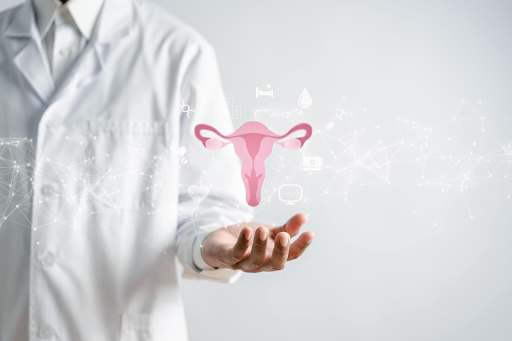- March 28, 2024
- PRIYANKA MAHESHWARI
- Comment: 0
- PCOS & PCOD
Have you ever heard the terms PCOS and PCOD thrown around, leaving you wondering if they’re the same thing? You’re not alone! Many women experience confusion around these terms, impacting how they approach diagnosis and treatment. Understanding the difference between PCOS and PCOD is crucial for receiving the right care and managing symptoms effectively.
This blog post aims to be your guide, unraveling the mysteries of PCOS and PCOD. We’ll explore what each condition entails, delve into the key differences in their symptoms, and highlight the importance of seeking professional medical advice for proper diagnosis and treatment.
Understanding PCOS and PCOD:
Let’s break down these terms:
- PCOS (Polycystic Ovary Syndrome): This hormonal imbalance affects ovulation (the release of an egg from the ovary) and menstruation. The National Institute of Child Health and Human Development (NICHD) estimates that PCOS affects 1 in 10 women of childbearing age in the United States. It’s a complex condition with potential long-term health risks like increased risk of type 2 diabetes and heart disease.
- PCOD (Polycystic Ovaries): This refers to multiple small cysts in the ovaries detected through ultrasound imaging. It’s important to understand that PCOD itself doesn’t necessarily cause any symptoms or may present with only mild ones, like occasional irregular periods. Unlike PCOS, PCOD isn’t necessarily a hormonal imbalance and may not require extensive treatment.
Symptoms: Unveiling the Similarities and Differences:
While both PCOS and PCOD can involve irregular periods, there are some key distinctions in their symptoms. Here’s a table to illustrate the differences:
| Symptom | PCOS (More Prevalent) | PCOD (Less Prevalent or Absent) |
| Irregular Periods | Very Common | May occur occasionally |
| Acne | Common | Less common |
| Excess Hair Growth (on face, chest, or abdomen) | Common | Less common |
| Weight Gain or Difficulty Losing Weight | Common | May occur |
| Difficulty Getting Pregnant | Common | Unlikely unless ovulation is affected |
Here's why these differences matter:
- Absence of Ovulation: A key distinction between PCOS and PCOD is ovulation. PCOS often disrupts ovulation, making it harder to conceive naturally. In PCOD, ovulation may still occur regularly, explaining why fertility is less impacted.
Real-world Example: Imagine Sarah and Emily both experiencing irregular periods. Sarah also struggles with acne and unwanted hair growth. These symptoms, along with the irregular periods, might indicate PCOS for which she’d require a doctor’s evaluation. On the other hand, Emily might only experience occasional irregular periods without other symptoms. This could be related to PCOD, but a doctor’s visit would be essential to confirm the diagnosis and determine if any treatment is necessary.
Diagnosis and Treatment: Taking the Right Steps:
Don’t try to navigate this alone! Consulting a doctor or gynecologist is crucial for the proper diagnosis of PCOS or PCOD.
Here’s what to expect:
- Diagnosis: Your doctor might perform a pelvic ultrasound to examine your ovaries and uterus. Blood tests can assess hormone levels and rule out other conditions with similar symptoms. Additionally, they’ll evaluate your menstrual cycle history.
- Treatment: The treatment approach depends on the diagnosis and your specific situation.
- PCOS Treatment: This focuses on managing symptoms and addressing hormonal imbalances. Lifestyle changes like a healthy diet and regular exercise are often the first line of defense. Medications like birth control pills can regulate periods and reduce androgen (male hormone) levels. In cases where pregnancy is desired, ovulation induction medications might be used.
- PCOD Treatment: If PCOD presents no bothersome symptoms, treatment might not be necessary. However, regular monitoring by your doctor is still recommended.
- PCOS Treatment: This focuses on managing symptoms and addressing hormonal imbalances. Lifestyle changes like a healthy diet and regular exercise are often the first line of defense. Medications like birth control pills can regulate periods and reduce androgen (male hormone) levels. In cases where pregnancy is desired, ovulation induction medications might be used.
Diet and Lifestyle for PCOS Management:
Let’s talk about food and exercise! A healthy diet and regular physical activity play a significant role in managing PCOS symptoms.
- Diet: Research suggests that a balanced diet rich in whole grains, fruits, vegetables, and lean protein sources can benefit women with PCOS. Focusing on complex carbohydrates with a lower glycemic index can help regulate blood sugar levels, which can be imbalanced in PCOS. This might involve limiting processed foods, sugary drinks, and unhealthy fats while incorporating more fiber-rich options like beans, lentils, and whole grains.
- Exercise: Regular physical activity can improve insulin sensitivity and overall well-being in women with PCOS. Aim for at least 150 minutes of moderate-intensity exercise per week, as recommended by the CDC. This could include brisk walking, swimming, cycling, or any activity you enjoy and can stick with consistently.
Remember, a personalized diet plan for PCOS or PCOD is crucial. While these general recommendations can be helpful, consulting a registered dietitian can create a plan tailored to your specific needs and preferences. They can consider factors like weight, activity level, and food allergies or sensitivities.
Conclusion:
Understanding the difference between PCOS and PCOD empowers you to take charge of your health. If you’re experiencing symptoms like irregular periods, acne, or excess hair growth, schedule an appointment with your doctor or gynecologist. Early diagnosis and proper treatment can significantly improve your quality of life.
Key takeaways:
- PCOS is a hormonal imbalance affecting ovulation and menstruation, while PCOD refers to the presence of cysts in the ovaries.
- PCOS often presents with a wider range of symptoms compared to PCOD.
- A doctor’s diagnosis is essential for determining the right course of treatment.
- Lifestyle changes like a healthy diet and regular exercise play a significant role in managing PCOS symptoms.


